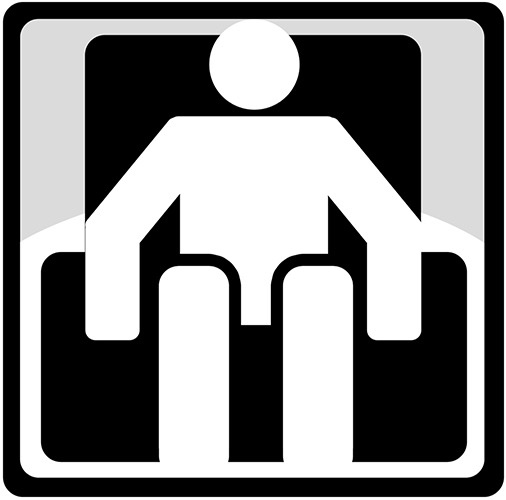Practicing Managerial Functions with Integrity and Ethics
1 hour ago
A master thesis conducted by Kamaruddin J of UniRazak in 2022 found that a significant majority of Malaysians have clarity on what is deemed unethical, what is right and wrong and acknowledged the rise of unethical conduct in the country.
Interestingly, Kamaruddin’s research also pointed out that while a majority of his respondents would not conduct themselves unethically even if directed to do so, there are still some who felt they are pressured to act unethically due to the working culture and acted not of their own choice.
This begs the question, who then determines and dictates unethical working culture? Russeft & Burton (2024) having scoured through layers of documents of organisations around the world, concurred that the main reason for unethical conduct in an organisation is due to poor leadership and prevalence of narcissist leaders, resulting in unachievable goals, cultural numbness and employees’ discrimination.
Malaysia is not short of scandals. Five big scandals in the past two decades involved government linked companies or government projects i.e Port Klang Free Zone in 2008, Sabah Water Department and 1Malaysia Development Berhad (1MDB) in 2015, the Immigration Department Migrant Scandal in 2016 and Tabung Haji (TH) RM9 billion accounting fraud in 2017 (Shannon Nair, Deidre, 2020).
In the case of TH, it was found that the Islamic pilgrims fund board had been paying dividends illegally with evidence proving that accounts were falsified to hide its losses of up to RM9 billion.
What was more concerning was that significant money was allegedly channelled to fund political activities.
When Pakatan Harapan government took over, RM10 billion was injected to the fund and a change in management leadership was swiftly conducted, resulting in a thriving TH today.
Managerial functions carried out by top management with high or low integrity and ethical conduct can often impact the profitability or losses and financial performance of an organisation.
Additionally, ethical and integrity in organisational management functions can create conducive working environment that permeates an ethical, dignified culture.
There are three key elements to build an ethical culture – ethics, integrity and moral.
Ethics is the analysis of matters of right or wrong, good or bad, deplorable or admirable. It is a set of code of conduct of what should and cannot be done within the confines of an organisation, a location, a venue or an environment.
Moral, on the other hand, refers to the actual beliefs and behaviours of an individual. It is the character of the person and how he or she conducts himself or herself based on the beliefs and principles he or she holds on to. (Karen, L. Rich).
Public Integrity, meanwhile, is a personality trait. A person with high integrity is deemed as one that holds strongly to his or her principles using a strict code of ethics to guide his or her actions. (Indeed Editorial Team, 2023).
It can be both a personality and a skill as it can be manifested over a period of time. Integrity is simply what one says and done, walking the talk, practice what one preaches.
A person of integrity often displays five personality traits such as dependability (someone others can rely on to get things done), display loyalty, speak honestly, practice good judgement consistently and respect to other people’s time, feelings, opinions and be considerate.
Ethics, moral and integrity are important qualities expected of anyone in professional settings. While the concept of ethics and moral are used interchangeably, the concept of integrity has often been debated as to whether integrity carries one’s ethical standing.
Michael Jensen, a Harvard professor, for example, defines integrity as a matter of person’s word, nothing more and nothing less. To him, integrity is when one honour one’s word, then one’s word is whole and complete. As such one’s identity will also be wholesome and complete and one’s personality and character are unbroken and unimpaired. Such is the state and condition of integrity.
It has nothing to do with compliance to a set of code of conduct good or bad, right or wrong behaviour, deplorable or admirable act, which are elements of ethical conduct. (Sun, William et al. 2018).
Importance of ethics and integrity in preventing economic crime in organisations
Ethics and integrity are important personality traits that can contribute to a positive work environment, build meaningful and long term relationships and increase an organisation’s reputation.
Additionally, it promotes fair competition, increases productivity and profitability, gets less regulator and government interference, promotes co-ordination and collaboration in the supply chain, invites participation to the organisation’s initiatives and activities, ultimately gaining trust and confidence amongst its shareholders, customers, other stakeholders and the community where the organisation operates.
Upholding business ethics and integrity are often faced with a business dilemma. Is business ethics and integrity based on self-interest of the management to stay ‘being good’ or should ensuring interest of the business which is to make profit in order to serve shareholders, benefit the society and satisfy other stakeholders supercedes?
To understand the importance of ethics and integrity in preventing economic crime in an organisation, it is pertinent that any organisation put in place ethical and integrity traits in its managerial functions as fundamental guiding principle.
Managerial Functions in an Organisation
There are typically four managerial functions carried out by management in an organisation – planning, organising, leading and controlling (Brigden, B 2024).
When these four functions are performed properly, in tandem and executed well, it forms the anchor and reason for an organisational success. And if all these functions can be executed ethically and with integrity, the sustainability of the business and longevity of the relationship of the organisation with its shareholders, customers and other stakeholders can be secured.
Let’s take a cognisant look at what these four managerial functions encompass:
Planning
Planning functions involve long term goal-setting. Management needs to pre-determine the vision and mission (goals and objectives) of the organisation and clearly states who the organisation serves, what products or services are offered and at what price, where are these products and services offered, when is the timing to introduce and launch these products and services, why are they offered i.e the benefits and how are they offered i.e through which channel of distribution (5W1H).
It is the phase where business challenges, growth trajectory plans, source of materials, resource allocation, workload capacity and management are pre-determined to move the business toward goals.
To do this, management will first conduct environmental scanning (process of collecting data and crucial market information, scrutinising current and future trends and issues in relation to the organisation’s business). These include technological, legal, ecological, regulatory, sociological and economic and financial trends and issues where the organisation intend to operate.
Common frameworks used include SWOT analysis (strengths, weaknesses, threats and opportunities), ETOP analysis (environmental threat and opportunity profile) or PETS (political, economic, social and technical factors of the environment. (Kanakaraja, M. 2024)
Typically, planning has three phases:
Strategic planning. Usually done by the highest authority in the organisation i.e the Chief Executive Officer and the top management, strategic planning is most crucial as it provides a long term direction macro view of the organisational goals, and is usually done in periodic years of three year plans or five-year plans.
Tactical planning. Tactical planning involves plans to achieve short and mid-term objectives — usually within a year and is more targeted. It must be aligned with the strategic plan, setting a general course of action that will be pushed out further in operational planning for execution. Senior management level usually prepares tactical plans breaking down the strategic plan into smaller, more measurable goals to achieve near-term desired outcomes.
Although it is more granular than strategic planning, it still doesn’t involve details of daily operations.
Operational planning. Operational planning, on the other hand, is all about matters related to day-to-day operations — using the principles and strategies laid out in tactical plans to accomplish the big-picture goals in the strategic plan.
Department managers, first-level leaders, and project managers often contribute to operational planning. Weekly in progress meetings, project schedules, timelines, action item charts, and Gantt charts are all tools used within operational planning.
A well thought-out plan will set the organisation on the path of increased market share, sustained customer satisfaction, gained respect from internal and external stakeholders and investment commitment from shareholders.
Organising allocation of resources and assets, delegation of tasks, RACI (responsibility, accountability, consulted and informed) charts of departments, staffing in accordance to job scope requirements are organising functions. As an organisation grow, the organisation structure needs to be agile and nimble to fit the needs of the growth.
Training, reskilling, digital transformation, asset allocation, work delegation are matters that managers have to coordinate to ensure resources are adequate to meet the demands of the growth trajectory and organised them in such a way that fit the business landscape today and in the near future.
When organising functions are well co-ordinated and managed, it ensures resources are used efficiently, reduce duplication of work, avoid costly mistakes, builds harmonious relationships, increase productivity and ultimately achieve common business goals.
Leading. For an organisation to move forward towards achieving its goals, someone needs to be in the driver seat and be the driving force. Leading is not confined only to those in the top hierarchy of the organisational structure. It must be embraced throughout all levels of the organisational structure—from project managers or leads, supervisors, managers, senior management level to top management.
Managing people is the key task of leading--rallying staff and pushing them to achieve a common goal. Additionally, good forms of leading include being able to distinct when and how to motivate, inspire, redirect, instruct, praise, command, demand and encourage.
There are many leadership styles researched and proposed, namely, coaching, mentoring, commanding, directing, delegating and supporting. Good leaders will know how to use these different styles of leadership in management towards different members of the team, in various different scenarios and push them to perform to achieve desired outcomes. It is a daily balancing act.
Controlling. The functions of controlling are aimed at ensuring all plans are progressing as per planned. Scheduling, managing deadlines, training employees, evaluating performance, assigning right people to the right job, budget controlling, allocating resources and assets are examples of controlling functions.
Controlling is the management effort to ensure key performance indexes and goals (set in the early stage of planning) are accomplished. It includes ongoing analysis of the plan and iterative updates to that plan as needed and helps the organisation to establish quality standards and benchmark, measure the performance of the team. If any deviations or off-track projects were found, the management can take corrective actions early, implement improvement measures to put them back on the right track to accomplish the intended goals.
Ethics and Integrity in Managerial Functions Organisations
Companies that demonstrate ethical and integrity commitment in its managerial functions will be seen and perceived as principled and deemed a good corporate citizen.
Most would have code of ethics in place as a guiding principle on how it serves and interact with its employees, customers, shareholders, suppliers and other stakeholders.
Some common code of ethics includes being accountable, responsible, transparent, upholds equality regardless of gender, race, culture, inclusive, trustworthy, fulfilling promises, loyal, dedicated, act professionally, discipline and etc.
Integrity, on the other hand, refers to managers acting out virtues mentioned above consistently over time. Eventually, it translates to respecting employees, listening to their feedback, understand their needs, taking their concerns seriously and ensuring their actions are align with those stated in the code of ethics of the organisation.
A manager is expected to act with integrity even in difficult situations such as when staff misses deadlines, arrives late to work, shows lack of interest in work and be there to understand and listen to the reasons behind such behaviours in order to set corrective measures to help the employee.
While integrity and ethics aren’t always easy to implement, upholding them helps build trust, strengthens reputation, improve decision making, fosters a positive work environment and promotes stronger, more resilient teams to create long term sustainable success for the organisation. (Management Training Institute, 2024).
By having these guidelines of ethical conduct and carried out by managers with integrity, organisations demonstrate that they are committed to fulfil the promises they make, practise what they preach and establish robust processes, resulting in quality products and services, customers feel cared for, employees are incentivised according to high quality work performance, profitability and shareholders get their due return on investments.
Failing which, the organisation will be facing reputational damage and compromised financial performance. Below are six notable key benefits of having workplace ethics (Indeed Editorial Team, 2022) and the pros and cons if an organisation does not portray or act out ethical practices with integrity:
Satisfied employees. Ethical organisation would have employees feeling they are fairly treated, incentivised according to their work performance, feel respected, heard and their job satisfaction is telling.
These will result in lower job attrition and organisations can attract new talents and candidates to work and grow their career with. Top 15 companies in Malaysia listed by LinkedIn in 2022 (LinkedIn News Asia, 2022) as best workplaces to grow one’s career include Petronas Malaysia, Maybank, Bosch, Permodalan Nasional Berhad (PNB), B. Braun Group, Standard Chartered Bank, Prudential, Shell, IBM, Tenaga Nasional Berhad, Maxis Communications Berhad, RHB Banking Group, Hong Leong Bank Berhad and OCBC Bank.
Conducive working environment
Significant improvement in workplace culture and environment can be obtained when organisations act responsibly and ethically as its managers, leaders and employers typically will follow suit and act accordingly. In contrast, if they are not treated fairly, they can whistle blow on the company’s practices causing not only reputable damage but also losses to the organisation.
Compliance to regulation and laws
More often than not, organisations set principles and guidelines in accordance to the requirement of the laws within the industry’s regulatory requirements where they operate.
By upholding strong ethical codes of conduct, organisations not only comply with regulatory obligations but also benefitted by receiving less government intervention by official governing bodies.
However, non-compliance and unethical managerial practices can increase the reputation risk of an organisation.
Improved goodwill and reputation
When organisations set out clear ethical standards for their workplace, they can typically enjoy an improved public image. In recent years, consumers and society, generally, have become increasingly concerned with how organisations treat their employees and customers and act accountably toward the public. H
However, if ethical standards are not clear, it will be damaging to its reputation. There are situations, nevertheless, where the management is put on a quandary, whether to support its staff or to support its customers.
A coffee chain retailer, in 2018, for example, had a taste of customer’s rage due to a 5 sen fiasco, reflecting its unethical business ethics. (Ang, MV. 2022).
A customer had raised in his facebook of being shortchanged by 5 sen because the cashier did not have enough 5 sen coins. Netizens were quick to highlight that even if it is a mere 5 sen, the principle of returning the exact change or more and never shortchange a customer should be upheld.
The coffee chain retailer’s reputation was tarnished despite an apology statement by the Chief Operations Officer (leading) as it was deemed insincere for mentioning it as only a mere 5 sen and showing the CCTV footage of the cashier returning the 10 sen change without hiding the customer’s face (operational function guideline was put to question). Source: (Ang, MV 2022)
Customer loyalty and engagement
Generally, customers will feel more engaged and increased their loyalty towards an ethical organisation than one which has less ethical initiatives.
When customers’ engagement and loyalty increases, financial performance would usually grow in tandem. Listening to customers’ feedback, concerns and respecting their values are important to sustain customers’ loyalty.
A company that manufactures products for female period and daily intimate care, had in 2021, shown great example of listening to its customers and respecting their values by consciously removing its advertisement deemed offensive by a Malaysian religious group. (Shaw, Kim, 2021).
Its advertisement which ‘displayed’ the image of the women’s Vulva in the centre of the floral embroidery of the traditional Nyonya Kebaya, was deemed disrespectful and degrades women. Source: (Shaw, Kim 2021)
Decision-making processes are streamlined
If an organisation upholds its standards and benchmark at all levels of its operations, organisational leaders will be able to solve problems more efficiently and productively. This is because when there are clearly stated ethical guidelines, specific ethical expectations have been set out for organisational leaders.
They can then refer to the code of ethics to display their integrity by using these guidelines in making decisions, direct their choices and simplify managing conflicts.
By having streamlined decision-making processes, a high level of organisational consistency in the long term can be in effect.
Johnson&Johnson, for example, set comprehensive procedures, policies and compliance training to help its employees and contingent workers navigate applicable laws, regulations and industry codes. (Johnson&Johnson, 2024).
The organisation also spells out clearly its own ethical standards in order to maintain ethical and compliant conduct with the highest level of integrity amongst its workers and management.
Challenges in Practicing Managerial Functions with Integrity and Ethics Some of the most common challenges identified in practicing managerial functions with integrity and ethics include the constant inducement of bribery and corruption, the perception of conflict of interests such as self-dealing (leaders entering into contract that benefits one’s or affiliated company or relatives), accepting gifts from acquaintances and friends, outside employment which contradicts one’s job scope, family interest where goods or services are purchased from companies controlled by family or friends. (LibreTexts Business).
Hence, many organisations in Malaysia today have imposed a no gift policy to uphold the integrity of contracts and decisions of procurement. While being honest is a virtue of integrity, at times, adherence to principles is easier said than done.
A leader or manager can constantly find himself or herself in a quandary of choosing the right course of conduct, openly declaring one’s stance and acting consistently with his or her choice—even when it’s inconvenient or unprofitable to do so.
For many, integrity is one of most important virtues and that it is an already given trait, that one ought to act with integrity. Hence, it is more a means to build trust and confidence by practising it through learning, conveying and developing with others to achieve the end goal of a moral commitment.
Nevertheless, such expectation is easier said than done. Counterfeit integrity – the pretense of having integrity, but in fact not held, engaged with, or put to practise--as Sun, William et. al (2018) puts it, have become rampant due to challenges highlighted above and it is getting more difficult to distinguish whether an organisation carries a genuine or fake integrity.
Counterfeit integrity tarnishes and erodes the reputation and sacred dignity of the concept of integrity, imposed costs on those who uphold true integrity, and suppressed motivations of business leaders’ who want to demonstrate authentic integrity.
In theory, counterfeit integrity is the antonym of the moral principle of integrity and is thus deemed unethical and deplorable. But in real life situations, depending on the morality of the environment, counterfeit integrity can be accepted as ethically right if the local morality is bad such as in any hostile and corrupt environment.
Henceforth, whether one will act out the true meanings of integrity remains to be seen as it depends on the environment one is in. Professor Stephen L. Carter of Yale Law School noted in his book Integrity published in 1996 said, “one cannot have integrity without being honest, but one can be honest and yet lack integrity.”
Ivlynn Yap is the Executive Chairman of Citrine One Group, holding an MSc in Economic Crime Management from HELP University. The opinions expressed in this article belong solely to the author and do not necessarily represent the views of Sinar Daily.
...Read the fullstory
It's better on the More. News app
✅ It’s fast
✅ It’s easy to use
✅ It’s free









